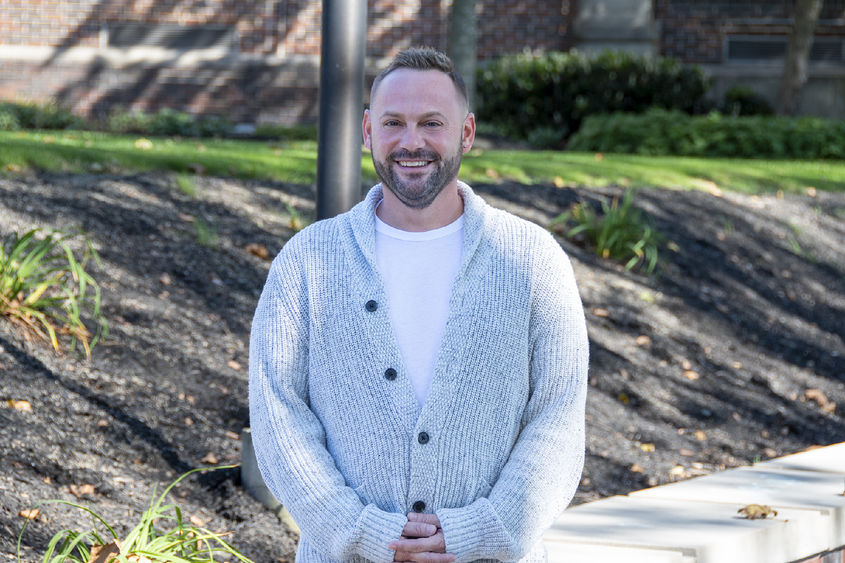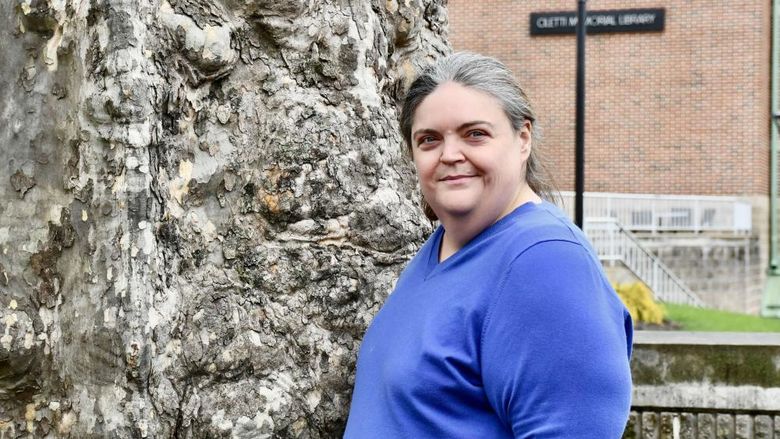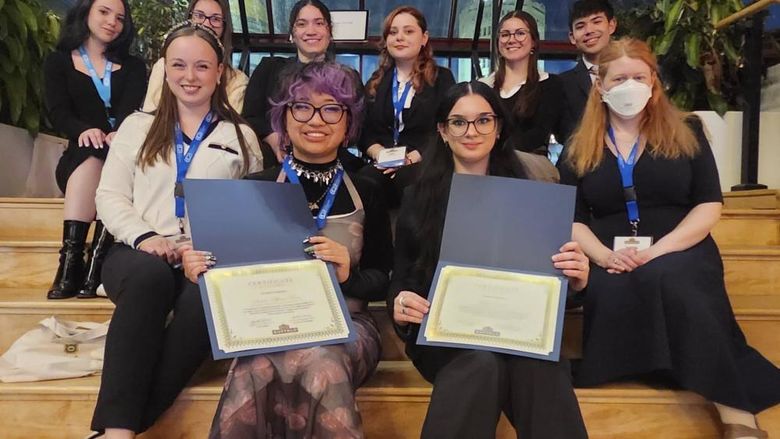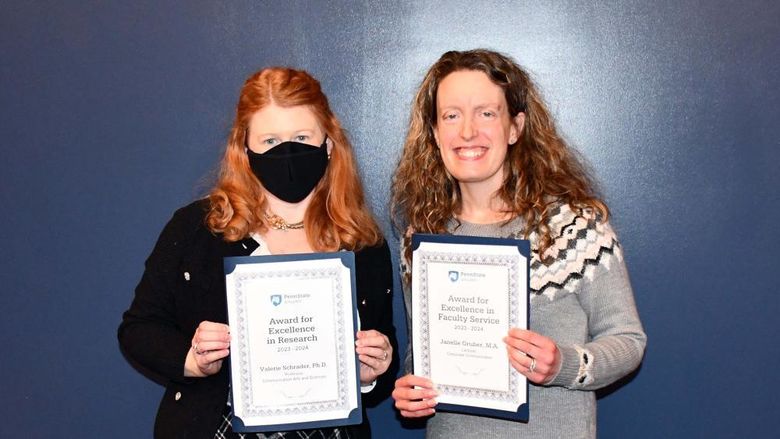
Ronald Kelly, assistant teaching professor and program coordinator of criminal justice at Penn State Schuylkill, is pictured at Penn State Schuylkill in fall 2021.
SCHUYLKILL HAVEN, Pa. — Ronald Kelly, assistant teaching professor and program coordinator of criminal justice at Penn State Schuylkill, has authored an open education resource (OER) textbook focusing on introductory criminal justice concepts. The book will save students as much as $165 on general education-level supplies while catering to various learning styles.
Stoking a passion for open education resources
Attending college is an investment, and the cost of textbooks and supplies can be cost prohibitive for some students. The textbooks Kelly once employed in his introduction to criminal justice courses cost between $135 to $165, and he was uncomfortable assigning such books to students who enrolled in the course simply to satisfy a general education requirement.
“I didn’t want students to spend that much money on a book that isn’t necessarily relevant to their chosen academic path, or something they’d reference in the future,” he explained.
So when Penn State’s Affordable Course Transformation (ACT) program administrators visited Penn State Schuylkill in 2019 and pitched the idea of developing open education resources to campus faculty, Kelly jumped at the chance.
“I had been using OERs for other courses, and I was aware of their power,” Kelly said. He explained that some students don’t get their student loan refunds to purchase textbooks and supplies until halfway through the semester, and for some students, they cannot afford the materials they need to succeed until it’s almost too late. “If you can level the playing field,” he said, “then everyone starts out equal. Then success is truly up to the student — everyone's coming to the classroom with the same opportunity.”
Presented with the chance to develop his own course materials for introduction to criminal justice, Kelly said he thought to himself, “I can do this. I have all the content and knowledge. I've been teaching this class for almost 15 years.” And so, in the summer of 2020, he devoted all his time and attention to developing this textbook — titled “CrimJ 100” to match the course in which it is used — a digital resource that he began assigning to his classes in the fall 2021 semester.
“The actual process of writing the book was not for me,” Kelly said, “but it’s all about student equality. It’s all about allowing students to have equal access to course materials.”
“The actual process of writing the book was not for me,” Kelly said, “but it’s all about student equality. It’s all about allowing students to have equal access to course materials.”—Ronald Kelly , assistant teaching professor and program coordinator of criminal justice at Penn State Schuylkill
Catering to different learning styles
One of the things Kelly finds most exciting about his OER textbook is the interactive activities embedded in each chapter — something Penn State’s Open & Affordable Educational Resources Working Group discovered through their OER pilot program. Kelly was involved with this pilot program, where he assigned OERs to his students and subsequently surveyed the same students to test the OER’s effectiveness.
“Students don't want a PDF copy of a textbook,” Kelly said. “They want materials they can engage and interact with, and I met with instructional designers biweekly to work out the interactivity of the resource,” he continued. There are at least two activities in each chapter of the textbook, and this interactivity allows students to better understand the materials. Students can manipulate data and apply what they have learned in models, helping them better understand the course concepts.
Whether a student is an auditory, visual, or verbal learner, “This textbook incorporates all of those learning styles into one package,” Kelly boasted. “The students find it to be user friendly, easy to read, and they love the tangible application sections of the book where you can alter items and move things around.”
Before the book was formally published, Kelly called on students to help him test and review the book. “They told me what they liked, what they didn’t like, and discussed whether or not they’d use the book. There are still people who want a physical book, so it’s helpful that they can print out sections of it to accommodate for their learning style,” he said.
Learning through teaching
By the time the book was approved for classroom use in early 2021, Kelly was relieved. He authored this book as a labor of love and felt fortunate to have support from Penn State’s Open & Affordable Educational Resources Working Group and various instructional designers.
“I was blown away by the time I invested in this textbook,” Kelly said, explaining all the aspects of the book he had never considered. To help participants develop their OER materials, however, the working group met with these faculty members frequently to discuss securing photo rights for their textbooks, how to license materials, and more.
“Not only did I have to develop a glossary of terms, appendices, and an index, but we all created our materials using software we’d never used before,” Kelly explained, underscoring a learning curve in this development. “I’d do the best I could do, and then the instructional designers would help me smooth it out.”
Developing this course textbook taught Kelly how to create learning materials for students at all levels. “I can see doing this for my other general education courses, as well,” Kelly said, explaining that he also saw an opportunity to use OERs in his SOC 001 Introductory Sociology course.
The future of this textbook and other OERs
This project was funded by Penn State’s ACT program, and the University owns the rights. But Kelly will be the book’s primary editor for as long as he is employed by Penn State, and he is set to publish a new edition of this book every three years. “This is just the first edition of many to come,” he explained. “I’m going to go back, evaluate, upgrade, add current events, and see what needs to be changed to keep the content relevant,” he said.
Because this textbook is an OER, it can be used by anyone at any institution. “It can be used in policing, corrections, and courts, too,” Kelly said. “Each chapter is a different section of course materials separate from the others around it,” he continued, outlining its adaptability.
“When I teach, I’m very student focused. So when I can help students get the content for free, it's a gift. There's no better time than now to investigate open, free education,” Kelly concluded.
Visit the OER and Low Cost Materials at Penn State website to learn more about the services they offer.





